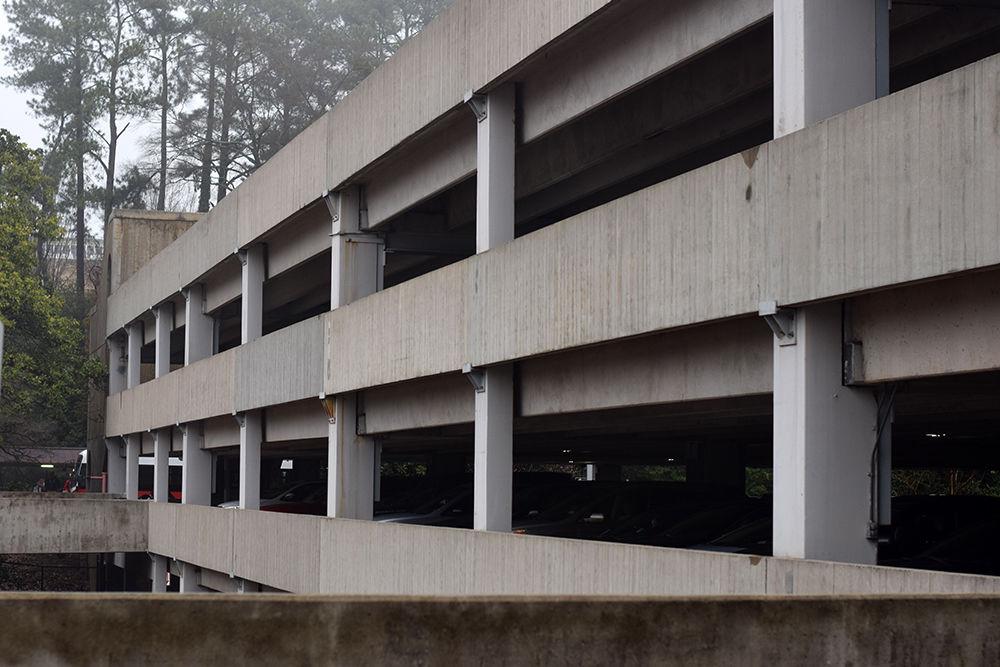The Coliseum Parking Deck has been a well-known structure to NC State students that supports the parking needs of faculty, visitors and students. However, the deck’s future is uncertain, as its older half is nearing the end of its life.
All parking decks have a finite lifespan, and the Coliseum Parking Deck is nearing its end. Catherine Reeve, director of NCSU Transportation, spoke on the history of the Coliseum Parking Deck.
The deck has two halves, totaling just over 2,200 spaces. Concrete used to construct the northern half proved to be faulty when a wall fell off approximately 30 years ago, Reeve said. This problem is believed to be the responsibility of the factory NC State bought concrete from.
“There are actually decks with similar problems in Greensville and Winston Salem that can be pinpointed back to this concrete factory,” Reeve said.
NCSU Transportation wants to emphasize to users of the Coliseum Deck that despite the concrete deterioration, they are confident the deck is completely safe.
“We have a very aggressive maintenance program, and we have put a lot of money into the Coliseum Deck, probably more than we do in our other facilities, because of this condition,” Reeve said. “There is nothing unsafe about the deck now; we routinely have structural analysis done on our facilities.”
Reeve said one such analysis conducted last year alerted NCSU Transportation that the life of the Coliseum Parking Deck is nearing its end. Because of this, a plan is in the works.
“We don’t have a firm plan,” Reeve said. “We have a lot of ideas we are discussing, but my sense is it is a very urgent thing, and that in the next six months there will be a plan developed.”
With only the older northern half of the deck needing to be replaced, there will still be approximately 1,100 parking spaces available for use at Coliseum Deck after construction begins. Reeve believes that replacement parking will be in place by the time the northern half is destroyed, but doing so will be costly. Much of this cost will be reflected in increased parking fees.
“Because we are totally receipt-supported, [meaning] our revenues only come from parking fees that we get from visitors, employees and students, we start building a reserve fund,” Reeve said. “Over a five-year period, we are trying to accumulate about $6 million in cash, because estimates to replace the deck in today’s dollars are about $25,000 a space; plus, the cost to demolish those 1,100 spaces is going to be about $42 million. That means that parking fees will have to be adjusted across the board for us to start accumulating cash.”
Plans for what will replace the void of the northern half of the Coliseum Deck are still unknown. Mike Kennon, assistant director of planning and operations, spoke on the level of coordination between departments required to devise a plan for the space.
“We have multiple departments working together, trying to coordinate the site,” Kennon said. “Right now we, transportation, are working with facilities, specifically the university architect’s office. They are working with housing to develop a housing master plan. Athletics is certainly a stakeholder on the site, and we have been in talks with them as well.”
As the plans for the Coliseum Parking Deck progress, transportation and other departments will develop a better understanding as to what may become of that portion of the deck, but until then, Kennon said, the future is uncertain.








